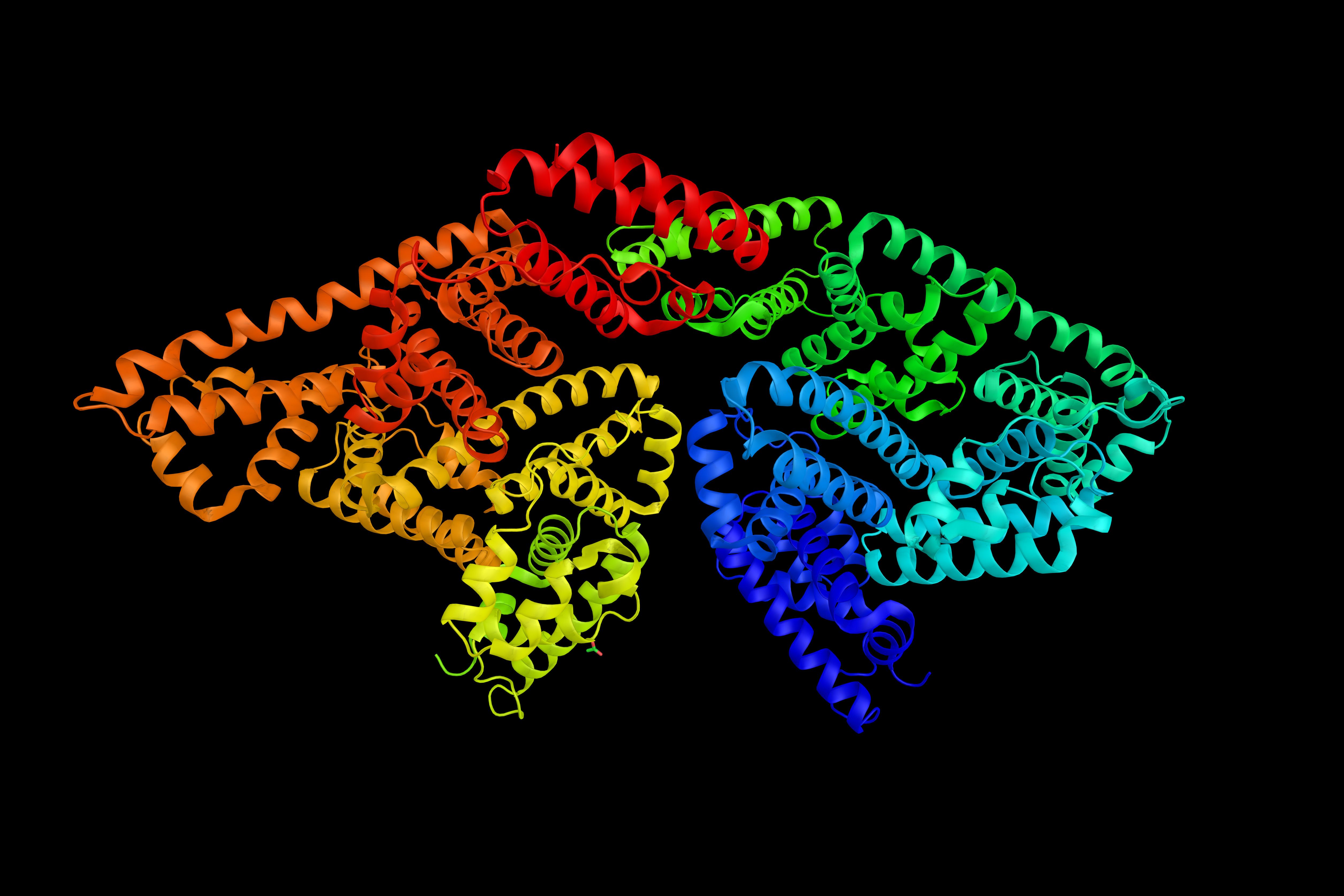Study Explores Interaction Between 2-Phenylquinoline-polyamine Conjugate and Bovine Serum Albumin
In a recent study published in Spectrochimica Acta Part A: Molecular and Biomolecular Spectroscopy, researchers examined the interaction between a newly synthesized 2-phenylquinoline-polyamine conjugate (QPC) and bovine serum albumin (BSA), to better understand molecular interactions (1). The study employed used UV–vis, fluorescence, circular dichroism (CD) spectroscopy, as well as molecular docking and dynamics simulations (1).
Bovine serum albumin, a serum albumin protein derived from cows. | Image Credit: © ibreakstock - stock.adobe.com

Led by a team of researchers from Henan University and Zhengzhou University, this study explored the binding dynamics between QPC and BSA, focusing on the underlying forces that drive the interaction. The results showed that several spectral changes occurred. For example, the research team noted that there was enhanced UV-vis absorption and reduced fluorescence (1). This means that there was a formation of a QPC-BSA complex. The quenching of fluorescence exhibited a pattern of large static quenching, accompanied by elements of dynamic quenching.
A thorough investigation of the thermodynamic parameters, docking simulation, and binding constraints revealed the interaction between QPC and BSA was also undergirded by Van der Waals forces, hydrophobic interactions, and hydrogen bonding (1). In particular, the docking study revealed more about the hydrophobic interaction, finding that 2-phenylquinoline moiety was a key contributor, situating QPC at the binding sites II of BSA (1).
Synchronous fluorescence and 3D-fluorescence analyses presented a challenge to the assumption of hydrophobic interaction between QPC and BSA, suggesting unapparent conformational alterations (1). Moreover, molecular dynamics simulations provided a contrary perspective, implying that QPC only brought about slight conformational shifts in BSA, possibly because of the compound's inherent instability (1).
Although molecular dynamics simulations suggested a limited impact on BSA's conformation, the experimental data and theoretical calculations did not completely align because of the unstable nature of the compound.
This study not only sheds light on the intricate molecular interactions between QPC and BSA, but it also underscores the importance of employing a diverse range of spectroscopic and computational techniques to capture the nuances of such interactions. The findings contribute to our understanding of how molecules interact at a structural level and open avenues for further research in the field of molecular and biomolecular spectroscopy.
Reference
(1) Tian, Z.; Ding, T.; Niu, H.; et al. 2-Phenylquinoline-polyamine conjugate (QPC): Interaction with bovine serum albumin (BSA). Spectrochimica Acta Part A: Mol. Biomol. Spectrosc. 2023, 300, 122875. DOI: 10.1016/j.saa.2023.122875
New Study Reveals Insights into Phenol’s Behavior in Ice
April 16th 2025A new study published in Spectrochimica Acta Part A by Dominik Heger and colleagues at Masaryk University reveals that phenol's photophysical properties change significantly when frozen, potentially enabling its breakdown by sunlight in icy environments.
Tracking Molecular Transport in Chromatographic Particles with Single-Molecule Fluorescence Imaging
May 18th 2012An interview with Justin Cooper, winner of a 2011 FACSS Innovation Award. Part of a new podcast series presented in collaboration with the Federation of Analytical Chemistry and Spectroscopy Societies (FACSS), in connection with SciX 2012 ? the Great Scientific Exchange, the North American conference (39th Annual) of FACSS.
Real-Time Battery Health Tracking Using Fiber-Optic Sensors
April 9th 2025A new study by researchers from Palo Alto Research Center (PARC, a Xerox Company) and LG Chem Power presents a novel method for real-time battery monitoring using embedded fiber-optic sensors. This approach enhances state-of-charge (SOC) and state-of-health (SOH) estimations, potentially improving the efficiency and lifespan of lithium-ion batteries in electric vehicles (xEVs).
Smart Optical Sensors for Thermal Management in Electric Vehicles
April 8th 2025A recent review in Energies explores the latest advancements in sensor applications for electric vehicle (EV) thermal management systems. The study, authored by Anyu Cheng, Yi Xin, Hang Wu, Lixin Yang, and Banghuai Deng from Chongqing University of Posts and Telecommunications, along with industry partners, examines how advanced optical sensors improve the efficiency, safety, and longevity of EVs.
Fiber Optics and Neural Networks Transform Vehicle Sensing and Road Safety
April 7th 2025A cutting-edge fiber optic sensing system, developed by researchers at Tongji University, leverages neural networks to classify vehicles with unprecedented accuracy. The system’s innovative design uses spectroscopic and optical sensor technologies to provide critical data for road maintenance and traffic management.